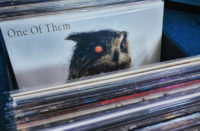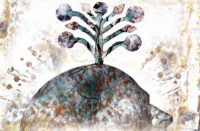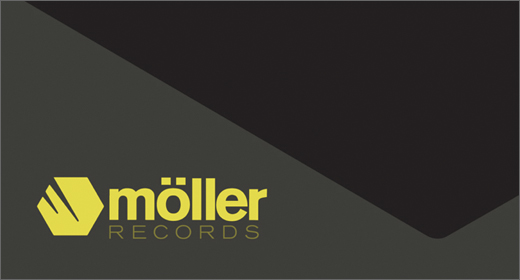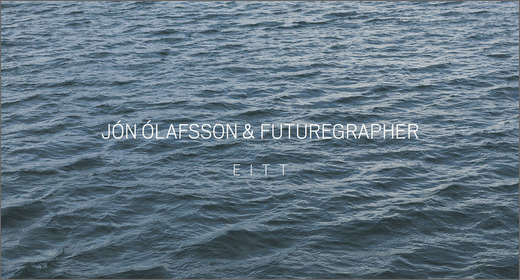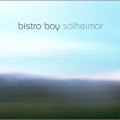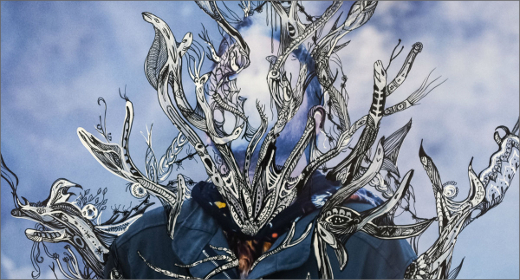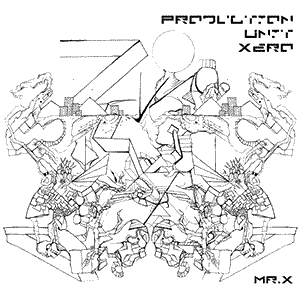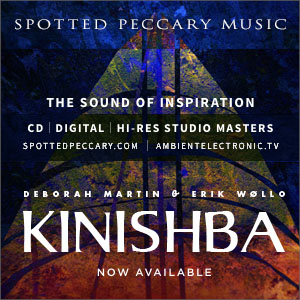“Möller exists to provide a platform for Icelandic musicians. We’re here to help. If we can’t work with a submission we even provide feedback to engage with the artist.” Möller were touring Ireland last week, both Belfast and Dublin in a bid to promote their work. Andrew Danso caught them at their Belfast show, close by Northern Ireland’s largest university, Queen’s University Belfast.
“The scene in Iceland is thriving,” says Frosti Jónsson, co-founder of Icelandic electro label Möller Records. “Gigs every night… They’re so many artists and DJs at work back home”. Really? It’s difficult to think of any electronic release of note coming out of the woodwork from Iceland. There’s Sigur Rós, Björk, GusGus, FM Belfast… but a pioneer techno DJ or electronic artist? Really Frosti? “Yes! It’s a thriving scene back home.”
Möller’s co-founder Frosti is a likeable character. Warm, friendly and understated in that typical Scandinavian way. He’s not a technical talker—he comes across with an upbeat simplicity. “Möller exists to provide a platform for Icelandic musicians. We’re here to help. If we can’t work with a submission we even provide feedback to engage with the artist.” What about money? “Hah! This isn’t about money. Gigs are how we make ends meet. We’re just one big family creating together.”
It’s an idealized vision to run a record label by. Yet, on the other hand, there’s a lot of planning that goes into each Möller release. The label has nineteen artists on their roster and each release is purposefully chosen—the production standard is always being raised and the style constantly questioned. Ninteen artists isn’t a vast amount of people, especially since the label has been going for five years. Möller might even be considered choosey by some.
Moller’s Irish tour was four acts. Co-founder BistroBoy (Frosti Jónsson), co-founder Futuregrapher (Árni Grétar), Gunnar Jónsson Collider and Einar Indra.
Möller were touring Ireland last week, both Belfast and Dublin in a bid to promote their work. I caught them at their Belfast show, close by Northern Ireland’s largest university, Queen’s University Belfast.
We were upstairs in a small venue with a tiny audience—it did gradually fill as the evening progressed. And there was a warm intimacy about the closeness of the crowd and the artist. “We’re happy if 5 people show up,” says the other founder of Möller Records, Árni Grétar (Futuregrapher). They got at least 30 people by the end.
Frosti tells me the opening artist plays in a rock band, Gunnar Jónsson Collider. “He’s a guitarist actually… plays a few different instruments.” This description helped to confirm my impression of Gunnar’s set. His sound felt riff based instead of drifting between chorus and verse. Gunnar would line up a melody and layer different musical elements over the melody. As if playing a guitar part and then adding more and more parts over it. His set constantly had a thumping beat underneath to keep the pulse racing. It was a breathtaking opening.
What about money? “Hah! This isn’t about money. Gigs are how we make ends meet. We’re just one big family creating together.”
Gunnar’s set had the kind of energy a psy-techno record may have—ala Infected Mushroom—it was tight, clean, everything stuck by the metronome. The set whizzed on with intense fury. There was barely a delicate moment. Gunnar links his set with visuals and they are a wonderful sight to behold. These are beautifully presented visuals, showcasing abstract animation and syncing perfectly as his sound rises and falls. They had a spectacular cinematic quality to them and were a highlight of the night.
Möller have a strong online following—most niche labels do—pulling in a multinational crowd, however Futuregrapher is the labels best asset for touring across the globe. He’s gigged with Biosphere, and Dave Clarke. He’s been described by local magazine, Reyjkavik Grapvine, as “fucking brilliant” and is a regular in Berlin. Futuregrapher is on route to Poland for another show as this is being written.
As he takes the stage you get the feeling he’s been here and done this hundreds of times. His set is the most aggressive. It flies out of the blocks with a thumping acid style and Futuregrapher can barely contain himself behind his laptop and turntables, moving with great energy. Futuregrapher’s releases mark him as a very flexible producer—after the gig he mentioned his latest collaboration which we reviewed and he spoke about its ambient and gentle quality, in comparison to his upbeat live set.
Frosti had backed this up at the start of the night, claiming “Futuregrapher goes from ambient to acid.” At the end of the night Futuregrapher responded, “can you imagine an actor acting in the same shitty genre all the time? Look at Radiohead & Thom Yorke. They’re an evolving thing. I’m that.” However, Futuregrapher’s live set was the most simple of the night—it was powerful and energetic. There was the occasional ambient moment yet these were used for dramatic effect. As the set went on, Futuregrapher would tend to stop a tune dead and then jolt into life with another high tempo track.
BistroBoy’s set was the most detailed of the night. It’s complex and dreamy, layered with many different synths and percussive elements. Despite the many layers, this set stayed consistent in style and each of the tracks sounded similar to one another. BistroyBoy floats in between electronic pop and fluid Detroit techno. His set feels airy and downtempo. It’s sometimes gentle and pretty. Sometimes the synths strike melancholic notes. His manipulated voice wails through the set adding another complexion. Behind him the visuals swirl in deep colors, blues, purples, reds. This was a hypnotic and pleasant experience. It added a much needed lull from the energy that came before it.
Frosti seemed excited about final act Einar Indra. He thought his work had the most “commercial” appeal. It’s easy to see why. Einar Indra’s set is like a heavily layered Dan Auerbach performance, Black Keys’ish at times, Vondelpark r’n’b in other spots. These were tightly structured tunes, they had a chorus and verse—pop by nature. They were accessible and danceable.
Einar Indra’s voice is put on top of his thumping beat and padded synths. His vocal is harmonized multiple times and filtered to sound grainy. His voice is a powerful energy that leads each track. Indra leans forward each time a lyric is sung and looks awkward, as if he is in pain. It gives an authenticity to his performance—he really is hitting some of those incredibly high pitch notes.
This felt like a landmark evening for Belfast’s electronic scene (if there even is one). These four highly accomplished artists didn’t wait for the serenade of applause or an outro speech to round up the night, they simply started disassembling their gear and got on their way. A few hand shakes, hugs and goodbyes were exchanged. Árni (Futuregrapher) gave me a batch of CDs and told me to “share them with my friends”. Humbling in the face of great talent.
With special thanks to Marty Byrne (Twitter) who put together the Möller tour and organized entry to the gig. He’s a vocalist, producer and engineer who’s worked with Möller’s roster.
mollerrecords.com | mollerrecords.bandcamp.com







